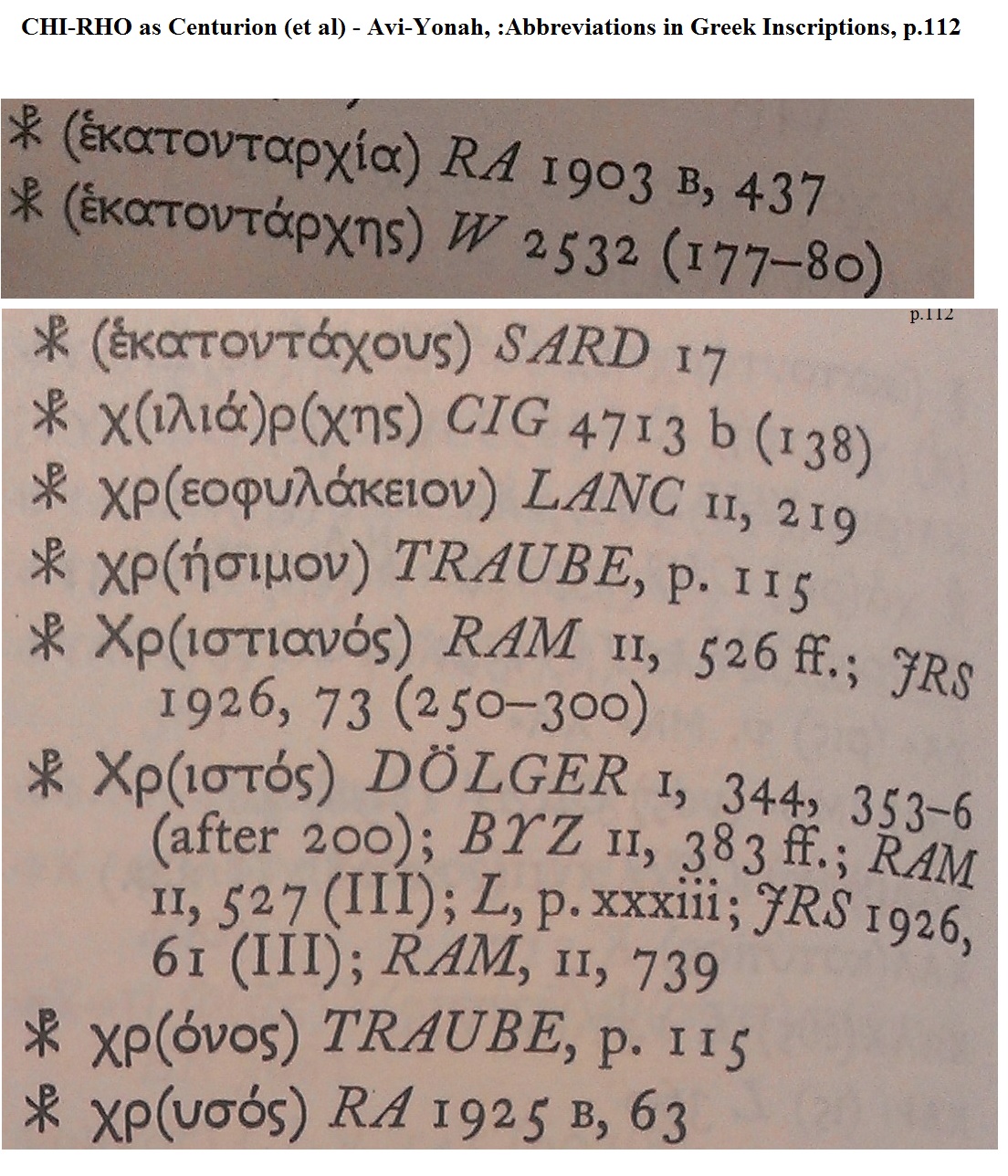RealityRules wrote:Leucius Charinus wrote:RE:
https://en.wikipedia.org/wiki/LabarumThe labarum (Greek: λάβαρον) was a vexillum (military standard) that displayed the "Chi-Rho" symbol ☧, a christogram formed from the first two Greek letters of the word "Christ" (Greek: ΧΡΙΣΤΟΣ, or Χριστός) — Chi (χ) and Rho (ρ). It was [supposedly] first used by the Roman emperor Constantine the Great ...
Yet, from the same Wikipedia page, -
'As for the labarum itself, there is little evidence for its use before 317 [AD].' [Smith, J.H., (1971) Constantine the Great, Hamilton, p. 104: "What little evidence exists suggests that in fact the labarum bearing the chi-rho symbol was not used before 317, when Crispus became Caesar..."
The standards themselves were made of timber and cloth and were thus relatively perishable. Very few of these have been physically discovered. It therefore is no surpirise to me that we have no direct evidence for the chi rho symbol on a standard. Or indeed whether the chi rho on the standard was a method foridentifying the centurion's standard in battle.
The point remains however that there is epigraphic evidence that the chi rho was used as an abbreviation for "centurion". This suggests that the Greek speaking world may easily have identified the chi rho symbol and as abbreviation for a centurion. (See below)
RealityRules wrote:... Since the vexillum consisted of a flag suspended from the crossbar of a cross, it was ideally suited to symbolize the crucifixion of Christ.

As L.C. notes, -
Leucius Charinus wrote:The "Chi-Rho" symbol ☧ is also found on 2nd and 3rd century Greek inscriptions as an abbreviation for the Greek word ἑκατόνταρχος (hekatóntarkhos) meaning
"Centurion" -
"By this sign conquer" !
By the sign of the centurion Constantine conquered. It was standard practice ...
Constantine didn't need Christ in 312
CE: he needed his centurions.
eta: It's also worth noting the
† shaped crucifix hardly appeared early on, if at all
I agree with L.C., -
Leucius Charinus wrote:IMHO the Christian church grabbed the symbolism retrospectively.
Yes the cross appears with Constantine's mother in the 4th century, and the first evidence of a crucificx with a figure on it comes from the 6th or 7th century. This seems to indicate later church embellishments.
FWIW here is my source for the epigraphic evidence that chi rho was used as abbreviation for centurion ..

The CHI-RHO seems to have been an abbreviation for - apart from "Christos" - the following:
ἑκατόνταρχος (hekatóntarkhos) centurion (multiple occurrences)χιλιάρχης ... Chiliarch ("commander of a thousand"; "thousandman")
χρεοφυλάκειον ..... (Chreophylax) Dura, Seleucid Financial Magistrate?
χρήσιμος ..... (Chrestos) useful, serviceable, good for use, good, apt. Strong's Greek: 5543
χρόνος .... • (chrónos)
χρυσός .... • (chrysós) gold (metal element, see above)
SOURCE: See Michael Avi-Yonah, Abbreviations in Greek Inscriptions, Quarterly of the Department of Antiquities in Palestine (Jerusalem: Government of Palestine, 1940) As reprinted in Abbreviations in Greek Inscriptions Al. N. Oikonomides, Professor of Classics Loyola University Chicargo. Illinois,ARES Publishing 1974., p.112,
also see a variation of the Chi-Rho in the Meggido inscription - “the Chapel of the Centurion”







